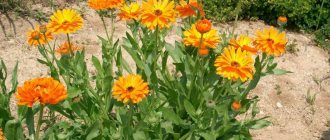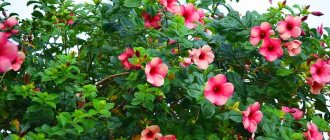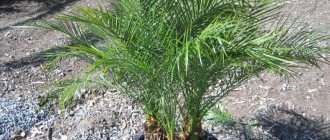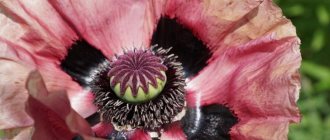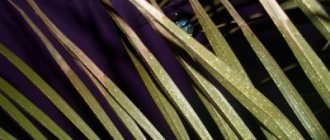Sweet tobacco is a herbaceous perennial plant belonging to the nightshade family. The popularity is explained by the decorative appearance of multi-colored five-petal flowers and the peculiar pleasant spicy smell.
Author of the article
Eduard Dmitriev
Florist and lover of indoor and garden plants.
The birthplace of tobacco is the South American continent. They learned about it during the expeditions of Christopher Columbus. In the tropical forests of the wild, tobacco is perennial, but in Europe it is an annual shrub and has been cultivated since the mid-19th century.
Previously, we talked about the perennial plant Durant.
Peculiarities
This is a garden plant of the Solanaceae family. Under natural conditions it is perennial, but at home it is mostly an annual.
The star-shaped flowers are colored in various shades. Moreover, the paler the color, the brighter the aroma of the flower. You can see this when the sun goes down.
It blooms throughout the summer season, extending into September.
The branches of the bush are straight. Large leaves are rounded at the root, elongated on the stems. This is not noticeable in the photo of fragrant tobacco, but glandular hairs cover its entire surface. They help absorb moisture from dew and neutralize the scorching rays of the sun.
If necessary, it can withstand replanting to another place even during flowering.
Botanical description
Sweet tobacco is a herbaceous plant from the Solanaceae family, usually from 20 to 90 cm in height with erect stems, small star-shaped flowers and large leaves. The entire plant is covered with glandular hairs. Flowers, depending on the type and variety, can be yellow, white, crimson, red or pink, and plants with less brightly colored flowers have a stronger aroma. Typically, tobacco flowers open only after sunset. Flowering of fragrant tobacco begins in June and ends in September. In the evening, the fragrance of tobacco flowers intensifies. The plant has been in cultivation since 1867.
Characteristics of bushes
With up to 60 species, the fragrant tobacco plant is divided into 3 categories:
- Tall.
- Medium height.
- Dwarf.
Quite tall bushes - above 80 cm. It is preferable to present them on the far perimeter of the flower garden, near fences and bushes of other garden plants. This category includes Hypnosis, Sensation.
Medium-sized tobacco grows up to 30-80 cm. It decorates gazebos, terraces and loggias of apartments. Lilac Mist belongs to it.
Small plants grow only up to 30 cm. These varieties frame flower beds and decorate balconies. Dwarf varieties: Nicki Red, Havana Appleblossom, Rosa Gnom.
When planting fragrant tobacco, height classification is of primary importance.
Key Features
Fragrant tobacco: cultivation and care
The plant belongs to the nightshade family and looks like a small bush covered with small hairs. It reaches a height of 20-90 cm, has straight shoots, large leaf blades and small star-shaped flowers with petals of different shades - from white to red, but there are also rare varieties with original shades. The inflorescences open after sunset and have a persistent, thick aroma, which is especially noticeable in the evening. The homeland of this plant is considered to be South America, where it blooms for several seasons in a row, but in our latitudes the crop grows as an annual - the main flowering period falls in the first month of summer and usually lasts until the beginning of autumn.
Table 1. Features of growth and cultivation of fragrant tobacco
| Key Features | Peculiarities |
| Reproduction | Seeds |
| Landing | Seedlings are grown from seeds in late winter or early summer, after which they are planted in an open place in the second half of May |
| Priming | Fertile with good moisture levels |
| Lighting | A sufficient amount of sunlight, but not too bright - the best option would be diffused light or partial shade |
| Watering | Frequent and plentiful; in dry and hot months, water the plants every day, but with normal rainfall, occasional watering is sufficient |
| Bloom | June – September |
| Top dressing | If the soil is sufficiently fertile, fertilizing is not required, but for poor soils mineral fertilizers with a low nitrogen content are required |
| Pests | Slugs |
| Diseases | The plant is not susceptible to diseases, as it contains natural substances that create a kind of immunity for it. |
For reference! Sweet tobacco is not used in the tobacco industry like a plant with a similar name, and today is used exclusively for decorative purposes.
Varieties
The plant has several dozen varieties and is widely used in landscape design.
There are about 60 varieties of fragrant tobacco, which differ from each other in the characteristics of the bushes and flowers. Depending on the height, all types of crops are divided into three groups - dwarf, medium-sized and tall.
- Dwarf ones have a height of no more than 30 cm, look good as a frame for flower beds, on balconies and window sills;
- Medium-sized ones grow up to 30-70 cm, and are usually planted in garden plots, near gazebos or terraces, as well as in balcony boxes;
- Tall ones (more than 80 cm) are recommended to be planted near fences and buildings, bushes, and on the back of lawns.
Each of the plant groups, in turn, includes several dozen varieties, but the most popular among gardeners are:
- Havana Appleblossum;
- Sander;
- Rose Gnome;
- Nicky Red;
- Green light;
- Winged;
- Night fire;
- White Hips;
- Svyatozar;
- Aroma Green;
- Dolce Vita;
- Evening;
- Ringing bell;
- Forest.
There is no difference in caring for different varieties of fragrant tobacco, so the choice can be made based on personal preferences and landscape design rules.
Green light - an original plant variety with salad-colored petals
Table 2. Popular varieties of fragrant tobacco and their features
| Plant variety | Peculiarities |
| Forest | Plants can reach from 0.8 to 1.5 m, but its subspecies has recently been bred for cultivation in decorative containers - its height is only 25 cm. Its shoots are straight, and the inflorescences are drooping, white in color with a very intense odor |
| Langsdorff | A variety of the crop 1.2 m high, the flowers have a rare salad shade and slightly resemble bells in appearance. In addition, you can choose a subspecies of Langsdorff tobacco called Cream Splash, which reaches a height of only 60-90 cm |
| Winged | The bushes have straight stems 60-70 cm in height, long leaves and large clusters of flowers with petals of different shades. They open only at night, but there are varieties that bloom during the day |
| Sander | A hybrid variety with large inflorescences of a red, less often white, hue. This plant variety has virtually no aroma. |
| Pleasure | A hybrid variety that is resistant to drought, the aroma is quite weak, the height is about a meter, the petals have a crimson color |
| Dolce Vita | The flower buds have different shades (lilac, white, pink, red, blue) and, unlike many other types of plants, are open from morning to evening |
| Green light | The plant is 50-60 cm high and the original color of the flowers is yellowish with a slight greenish tint. |
Features of cultivation
For planting and maintaining fragrant tobacco in open ground, a space is allocated that protects it from drafts, gusts of wind and provides partial shade. Dig up the soil in the fall, fertilize it, if necessary, add a drainage compound.
For planting, planting holes are dug, maintaining a distance of 25-30 cm. When the plant is tall, the distance can be increased.
Immediately before planting, add superphosphate mixed with soil into the recess. The plant is carefully lowered into the hole, covered with soil, compacted, and watered.
Planting fragrant tobacco in open ground
When to plant
Planting of fragrant tobacco in open ground is carried out when warm weather sets in, the ground warms up and return frosts pass - approximately from the second half of May. But two weeks before planting, the seedlings begin to get used to the open air, daily exposing the seedlings to the street for some time. At first, the session should last no more than an hour, but gradually the duration of the seedlings’ stay in the air should increase until it can stay there around the clock. And only after this the seedlings can be planted in the flower garden.
How to plant
Tobacco is grown in an area protected from strong winds and direct sunlight. Decorative types of tobacco are undemanding to the composition of the soil, but its fertility and humidity are important. Poor soil should be dug up with compost or humus in the fall and, if necessary, drainage material should be added to it.
When planting seedlings in open ground, you must adhere to the scheme developed by experts: the distance between holes should be at least 20-30 cm. Keep in mind that tall varieties of fragrant tobacco can reach almost a meter in height, and large plants need more space. First, the seedlings stretch out to their full height, and then begin to spread along the ground.
Before planting, add a little superphosphate to the holes, mix it with soil, and then transfer the seedling with a lump of earth into the hole, fill the hole with soil, compact the surface and water it.
- The main tasks in the garden at the end of summer are to relax early
Using seeds for planting
A garden flower reproduces simply:
- directly with the seeds of fragrant tobacco, with further use of seedlings;
- by self-seeding.
The time for planting seeds for seedlings is January-March. Accuracy depends on the climate of the region. The seedlings will be ready for transplanting into open ground in a couple of months. By this time the soil should warm up steadily.
The containers are prepared shallow, with a wall height of 7-8 cm. Ready-made soil is purchased in the store. You can make the soil mixture yourself, using the following in equal proportions:
- peat;
- humus;
- land from the site.
Small annual seeds are prepared before planting in an open flower garden. They are placed between layers of damp material to swell. Seeds that have increased in size but have not hatched are scattered evenly over the surface, lightly pressed into the substrate, moistened and covered with film.
Having obtained the greenhouse conditions, the box is placed in a lighted place with a temperature of +20 ° C. At the germination stage, the soil is moderately moistened, carefully loosened, and ventilated every other day.
Using seeds for seedlings, caring for them during this period, growing fragrant tobacco, even a novice gardener can do it.
Brief information about tobacco and cultivation
- Sowing for seedlings: from mid-February to April
- Germination time: 5-15 days. Depends on the variety, condition of the seeds and ambient temperature
- Planting in the ground: from mid-May to the end of June
- Harvest: July to October
Tobacco (Nicotiana) is a genus of perennial and annual plants of the Solanaceae family. Grown to produce raw materials used in tobacco products. The most prominent representatives:
- Common tobacco (Virginian tobacco / Real tobacco / Nicotiana tabacum). A plant up to 3 m high with pink flowers, a tubular corolla with sharp blades. The leaves are oblong, sessile. The plant is thermophilic. It is grown in many countries of the world and has a huge variety of varieties.
- Common shag (Country tobacco / Nicotiana rustica). The plant is up to 1.2 m high. The flowers are yellowish in color, the corolla has a short tube and rounded blades. Leaves are ovoid. Plants are more unpretentious than ordinary tobacco.
Mahorka has been grown on an industrial scale in Russia since the 19th century (even in the Urals and Siberia).
Bolivia and Peru are considered the birthplace of tobacco. This plant was brought to Europe by the expedition of Christopher Columbus. Peter I brought tobacco to Russia.
All parts of the plant contain nicotine. The leaves contain the most nicotine - 0.75-2.88%. Nicotine is a potent neurotoxin and cardiotoxin. When consumed, a short-term euphoria occurs. Tobacco use causes physical and psychological dependence.
First shoots
After half a month, sprouts will appear. The boxes with seedlings are moved to a room with t +16o C, and the cover is removed. When 2-3 strong leaves appear, the sprouts are dived into separate cups:
- water the soil before planting;
- remove the plant without shaking off the soil from the small roots;
- and place separately in prepared containers.
Water sparingly, do not overwater, do not let it dry out.
Before planting fragrant tobacco on the plot, it is hardened for two weeks - every day it is briefly exposed to the yard, gradually increasing the time.
Mr. Summer Resident recommends: fragrant tobacco - a fungicide in the garden
Fragrant tobacco is a beautiful and useful plant for a summer cottage. The aroma attracts bees, which is important for insect-pollinated crops.
The plant also successfully defeats the Colorado potato beetle. Tobacco and potatoes belong to the nightshade family. The dangerous insect moves onto the fragrant flower, but the phytoncides in its leaves are poisonous. Pests die after eating the greens.
To get rid of Colorado potato beetles, experts advise planting fragrant tobacco around the perimeter of the plot a few days before potatoes. The flower is not addictive to pests, like chemical poisons. Annual joint plantings for three years will help get rid of dangerous insects.
Fragrant tobacco is one of the unusual fragrant flowers that create a unique garden atmosphere. Combines well with other plantings. They delight you with their appearance all summer long and do not require complex care.
Care
Activities for caring for fragrant tobacco flowers do not require special skills. This is the implementation of ordinary, without any special gardening rules:
- watering;
- getting rid of weeds;
- loosening the soil;
- introduction of fertilizers;
- disease prevention;
- protection from pests.
Fragrant tobacco does not need diligent fertilization with organic matter, mixtures containing nitrogen, otherwise the opposite effect will occur - an increase in green vegetation and poor flowering. It is enough to fertilize once during the appearance of buds, plus again at the very beginning of flowering. To do this, mineral fertilizer is added to irrigation water.
If the summer is hot, dry, and not rainy, you should water it daily.
For greater growth of the bush, if desired, you can pinch the top of the plant.
After flowering
Before the onset of winter cold, the most spectacular and healthy perennial bushes are shortened by ⅓ by cutting off the shoots.
Carefully dig up, transplant into separate pots and leave for the winter in a bright, warm room, watering as needed. Plant in an open lawn closer to the summer warmth.
Types, varieties
The term “fragrant tobacco” itself combines several types of plants. All of them are from the Paslenov family:
- Forest tobacco - with white flowers, reaches 80-150 cm. A dwarf variety measuring a quarter of a meter has recently been bred;
- Langsdorf - with dark green bells, bush height 120 cm;
- Sander tobacco - popular varieties: Tuxedo Lime with yellow flowers, and Tuxedo Samen-Pink with salmon-colored flowers;
- Dolce Vita - varieties of the species are distinguished by the variety of colors of the blossoming buds, which open throughout the day;
- Green Light - grows up to half a meter, has yellow flowers with a light green tint;
- hybrid Pleasure - about a meter tall, with raspberry-colored flowers, quite tolerant of drought;
- Winged tobacco is distinguished by an abundance of varieties.
Tobacco Winged
This species has a variety of shades of colors:
- raspberry-red shades in Evening Breeze, Red Devil, Crimson Rock;
- the white flowers of the White Bedder variety are open and fragrant during the day;
- Lime Green has light green flowers.
Varieties in demand:
- Green light;
- Lunevsky;
- Night fire;
- Havana Applebloss.
All varieties support the method of growing from seeds.
In flower shops it is easy to find seeds of the low-growing series Niki, Avalon, Perfume, and Roll.
Diseases, pests
Nature itself has created preventive measures for the plant. The fungicides contained in it prevent diseases and pests from appearing and spreading. By protecting itself, fragrant tobacco protects neighbors living nearby.
Sometimes the plant is affected by Peronosporosis, and:
- leaves dry;
- the edges curl;
- a yellowish tint is formed;
- a gray and purple coating appears on the leaves below.
If symptoms of the disease are detected:
- dig up a bush, burn it;
- dig up the soil and spray 30 liters of 7.5% formaldehyde solution on this place;
- treat the used instruments with 3% formaldehyde solution;
- Spray the seedlings with 80% Zineb solution.
It is recommended to periodically inspect all plants for the presence of disease.
Rarely, fragrant tobacco is affected by root rot - the plant turns yellow and dries; and stem rot. For prevention, before the time comes to plant in open ground, it should be treated with a fungicide at the seedling stage.
The pests that may bother you are slugs and, oddly enough, the Colorado potato beetle. But constant monitoring, manual collection and their destruction help cope with the scourge.
This gentle plant has nothing to do with addiction and nicotine. Despite the name, its description suggests that this flower, pleasing with its aroma and beauty, creates attractiveness and brings harmony to our garden plots.
Reviews
The flower's variegation and unpretentiousness have made it a favorite among gardeners. The happy owners of this beauty share their admiration and talk about some of the difficulties in cultivating the annual.
Larisa Petrovna “I only met the plant in the fall and immediately fell in love with it. I was lured by the colorful picture on the package of seeds. There were no problems with sowing and seedlings. I planted seeds for seedlings in March, and transferred them to the flowerbed in May. In July, the bushes began to delight with multi-colored, fragrant buds resembling small stars.
For the sake of experiment, I cut it for a bouquet - they stood in the vase for quite a long time, filling the room with a pleasant aroma. There is only one drawback to fragrant tobacco - it is that the plant is grown as an annual. I want to dig up the bushes in the fall and transplant them into flowerpots. I hope that in the warmth of home, my flowers will delight me all winter.”
Svetlana – a novice gardener “I saw this handsome guy in a photo on the Internet. I immediately liked the interesting color of the buds - a light green shade. And the name was completely surprising - fragrant tobacco. I found the seeds in a flower shop and chose the brightest varieties. As a beginner in the flower business, I strictly followed the manufacturer's instructions. And voila! My flowerbed attracts all my neighbors with its diversity, and its intoxicating aroma allows me to relax at the end of a hard day at work.”
Nikolay “I’m not a fan of bouquets on the estate, but I regularly plant tobacco in the beds. The thing is that the plant attracts the Colorado potato beetle. This means that potato bushes are safe from this pest. And it’s easier to collect beetles from flowers.”
Ekaterina “And I had a negative result from my acquaintance with this flower. In the first year after sowing the seeds, only two or three bushes sprouted in open ground, and even those were weak and painful. The next year I sowed seeds for seedlings. But during the flowering process, it turned out that the buds did not emit any aroma. In general, I decided not to plant this flower again.”
